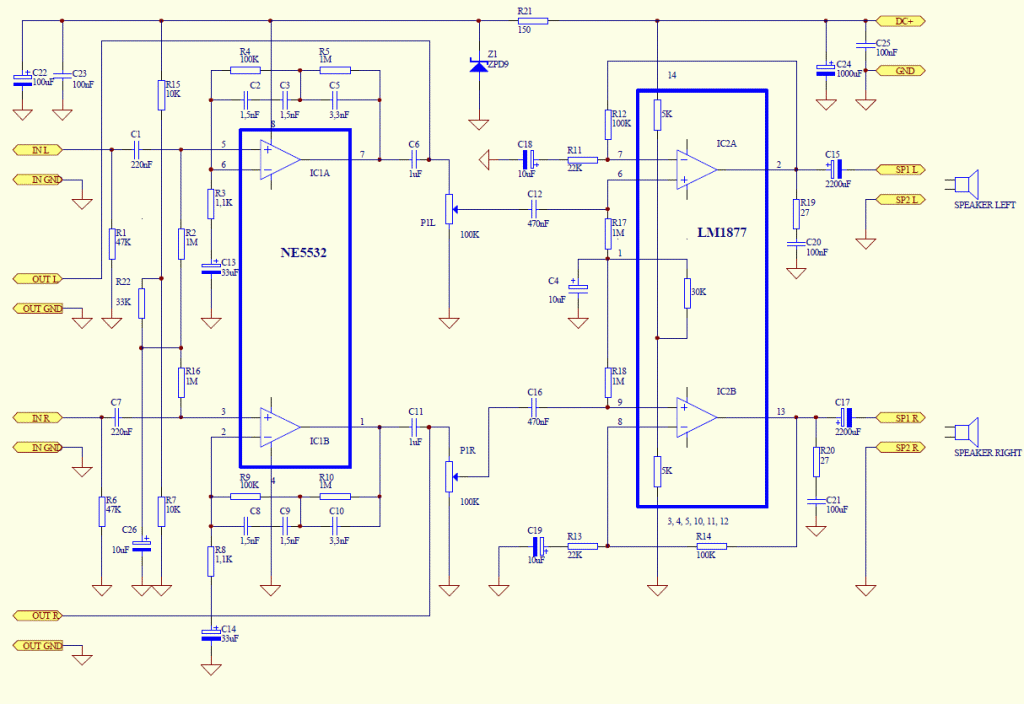To listen old vinyl LP’s in a correct sounding on a sassy with dynamic cartridge you need a circuit, I named it vinyl convertor. You can find this circuit in old amps, but it isn’t embedded in home cinema equipment or amplifiers can be obtained nowadays. Also, if you want to archive your vinyl LP’s in your computer it is necessary to use this convertor. It is good, if this corrector has a little built-in amplifier to drive small control speakers, or earphones. Schematic of circuit built for this express purpose has two parts, convertor and amplifier.
The convertor contains NE5532 integrated circuit with extreme small noise. Resistors are 1% metal film 0,6W types, condensers of this corrector section should be 5%, 63 – 100 V types. Convertor section has direct output to external amp or computer. Amplifier section contains integrated amp IC LM1877. It delivers to speaker 2W/channel output power with very low distortion. Potentiometer P1 is for control the output power of the amp section.
The whole circuit works from external 12-16 V DC supply. LP’s are engraved with reduced bass levels and increased treble levels. For the same sound level, a low frequency requires a larger groove which gives two drawbacks:
- Less recording time
– Difficulties for the cartridge to follow it and thus, higher distortion
At the other end of the spectrum, the contact between the stylus and the groove makes noise, a high frequency noise. By increasing the high frequencies level during recording we can obtain a better signal/noise ratio as the noise is reduced by the playback curve.
Here is the formula to obtain the optimum curve:

Where:
N=level in dB
f=frequency
t1=treble time constant, 75uS
t2=medium time constant, 318uS
t3=bass time constant, 3180uS

